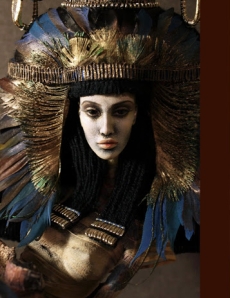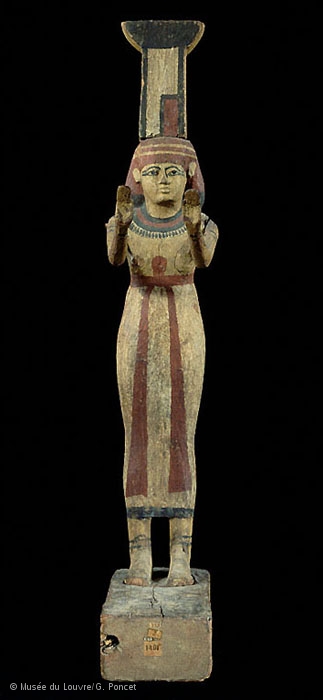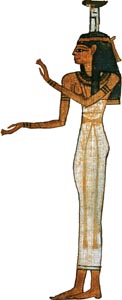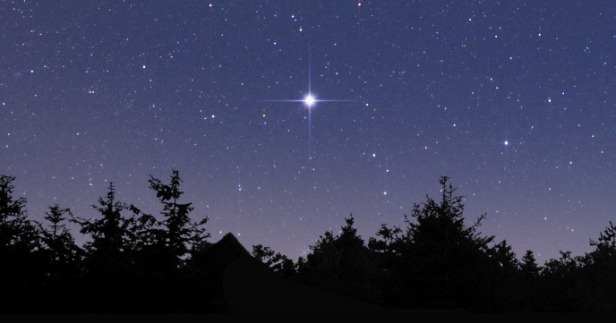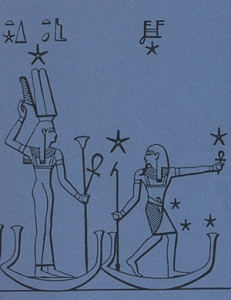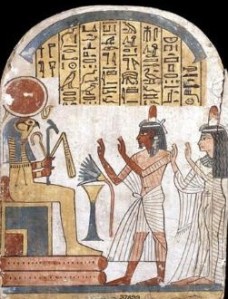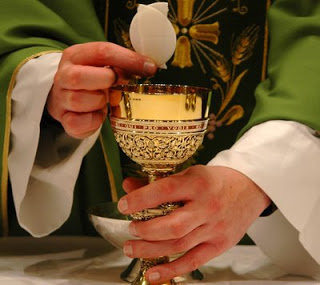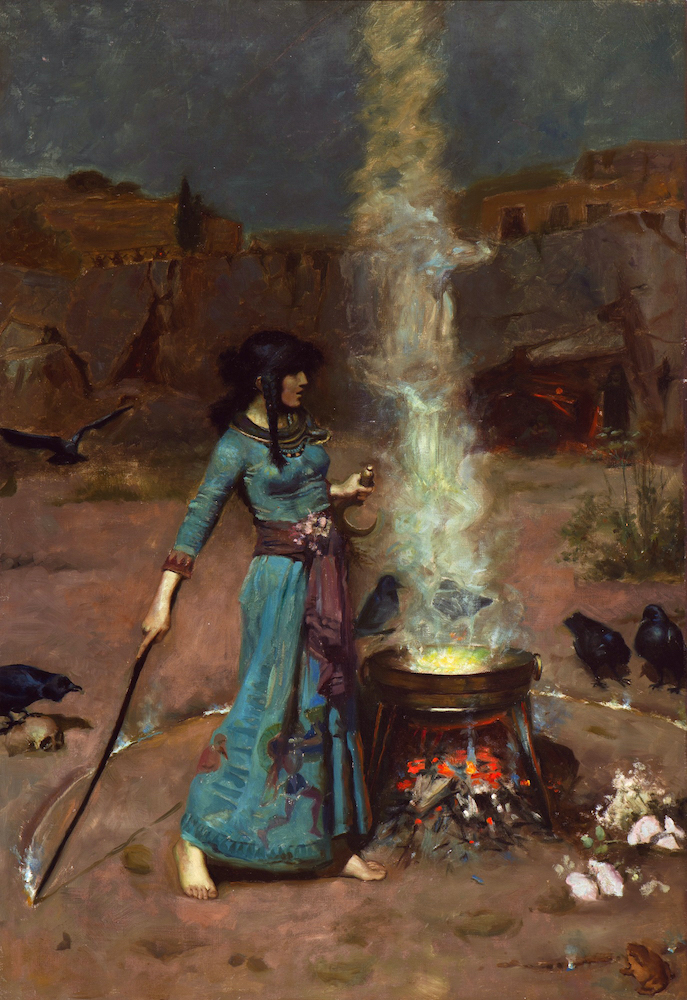Connect & Communicate With Animals & Animal Spirit Guides
Mysteries of Life: Cuivanya
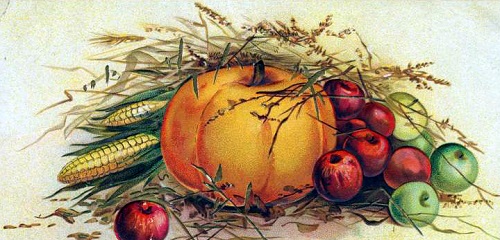 Cuivanya, the Autumn Equinox festival, celebrates our Mother God as the Ground of All Being and the Source of All Life.
Divine Life is present throughout the cosmos, in all creation, and this autumnal equinox festival traditionally expresses that through the agricultural symbolism of the harvest, which is not simply a "metaphor" but a ritual in the fullest and deepest sense of the word.
Read about the inner meaning of the Feast of Divine Life
Cuivanya, the Autumn Equinox festival, celebrates our Mother God as the Ground of All Being and the Source of All Life.
Divine Life is present throughout the cosmos, in all creation, and this autumnal equinox festival traditionally expresses that through the agricultural symbolism of the harvest, which is not simply a "metaphor" but a ritual in the fullest and deepest sense of the word.
Read about the inner meaning of the Feast of Divine Life Mysteries of Life: Cuivanya
 Cuivanya, the Autumn Equinox festival, celebrates our Mother God as the Ground of All Being and the Source of All Life.
Divine Life is present throughout the cosmos, in all creation, and this autumnal equinox festival traditionally expresses that through the agricultural symbolism of the harvest, which is not simply a "metaphor" but a ritual in the fullest and deepest sense of the word.
Read about the inner meaning of the Feast of Divine Life
Cuivanya, the Autumn Equinox festival, celebrates our Mother God as the Ground of All Being and the Source of All Life.
Divine Life is present throughout the cosmos, in all creation, and this autumnal equinox festival traditionally expresses that through the agricultural symbolism of the harvest, which is not simply a "metaphor" but a ritual in the fullest and deepest sense of the word.
Read about the inner meaning of the Feast of Divine Life Offering to Isis: Fall EQ 2021
The festival starts this coming Friday. The weather forecast is perfection. The ritual cast is rehearsed. We are ready to go and can’t wait to see those of you who can make it. Still time to register!
The Pacific Northwest is ON for an Isis-themed Fall Equinox Festival (Sept. 24-26, 2021). This is not the same festival we were planning for 2020. That one was much more…involved…shall we say. This one is a gentle way of coming together once again as a community. So I’d like to share with you the write up for the festival, then I’ll repost something on Making Offering in the Egyptian way that will be related…
Offering to Isis: A Fall Equinox Celebration of the Goddess and of Community
If you asked the ancient Egyptians, the act of Making Offering was one of the things that maintained Ma’et, that which is Right and True. Offering helped keep the world in balance. Making Offering is part of the great reciprocal flow between the Divine and the human. It is one of the most important ways we communicate with our Goddesses and Gods. It is hallowed by tradition. It is empowered by magic.
As we turn the wheel at this Fall Equinox, let us come together in rituals of offering. Under the Wings of the Great Goddess Isis, let us gather in a celebration of our reentry into and reconnection with Community. In the presence of Isis Myrionymos, Myriad-Named Isis, Goddess of the Ten Thousand Names, let us gather with open hearts and generous spirits to Make Offering.
As we human beings have always done—from the First Time, the Zep Tepi—we shall give gifts to Isis and we shall receive gifts from Her.

We are living through extraordinary times. Many of us have gone through intense changes. There have been painful losses. And there have been surprising gains. Through Rites of Offering, we can give thanks, mourn losses, and ask for aid. We can find Divine connection and reawaken our hearts.
The Rites of Offering
Our rituals are inspired by the Daily Offering Rites worked in ancient Egyptian temples. We will come together four times, at the cross-quarters of the Holy Day and Sacred Night, to Make Offering to the Goddess in four of Her myriad names.
Yet, as a Community, we are many different people, on many different paths, who honor many different Deities. And so the Iset Weret— the Great Throne Altar of Isis—will welcome all our Divine Ones. If you wish, you are invited to bring an image or symbol of your own Divine One/s to add to the Great Altar that They may receive Offering as well.
Now, Let’s Celebrate
This festival is intended to give us plenty of open time so that we can be together…for feasting, drumming, dancing, and just relaxing. No formal workshops are planned.
Come join us in this Fall Equinox celebration as, under the Wings of Isis, we come together as a Community once more.
Now here’s a little something about Making Offering…
****************************************
Can Isis smell the flowers we place upon Her altar? Does She eat the delicacies we so carefully arrange upon Her offering mat? Does She drink the wine we pour into a beautiful cup and lift to the smiling lips of our sacred image?
Well, no.
And, yes.
Although I have had weird phenomena happen with offerings—for instance, once an entire two-ounce packet of incense (you DO know how much two ounces of powdered incense is, right?) was apparently incinerated without leaving a whiff of scent in the air of our tiny temple space—usually, the flowers wither naturally, the food dries to inedibility, and the wine evaporates.
So did the Goddess receive Her offerings or not?
For the ancient Egyptians, the sacred images of the Deities were sacred precisely because they were filled with some measure of the Deity Her- or Himself. Offerings to Isis were received by this bit of the Goddess residing in the image, and through it to Her greater Being.
The main spiritual mechanism for the transfer of an offering from offerent to Deity was the ka, or vital, life energy. All living beings—Deities, human beings, animals, fish, plants, stars, mountains, temples—have a ka. The kas of the Goddesses and Gods are extremely powerful. In one Egyptian creation myth, the Creator Atum embraces His children, the God Shu and the Goddess Tefnut, with His ka in order to protect Them from the primordial chaos of the Nun into which They were born—and, importantly, to transfer His ka to Them, giving Them life. Ka energy exists before a being comes to birth, is joined to that being at birth, lives with them throughout life, then travels to the Otherworld after death. The tomb became known as the Place of the Ka (among many other designations) and to die was to “go to one’s ka.”
The ka “doubles” the person physically, yet the ka is not essentially personal. It is held in common with all living things—including the Deities. The ka was the ancient Egyptian’s connection to a vast pool of vitality greater than the individual person.
But that’s not the end of it. One meets one’s ka after death where it can continue to protect.
Utterance 25 of the Pyramid Texts says that the dead king “goes with his ka.” Just as a list of Deities “go with Their kas,” so does the king:
“You yourself also go with your ka.
O Unas, the arm of your ka is before you.
O Unas, the arm of your ka is behind you.
O Unas, the leg of your ka is before you.
O Unas, the leg of your ka is behind you.”
You might recognize this formulation. It is a common magical formula for invoking protection on all sides; similar to casting a circle or the Lesser Banishing Ritual of the Pentagram or part of the so-called Breastplate of St. Patrick (“Christ at my right. Christ at my left, etc.”)
Even though ancient Egyptians could experience the ka as separate from themselves, the ka also connected the person with the long line of humanity—for the ka was associated with the ancestors. In fact, the ancestors were thought to be the keepers of ka energy. Jeremy Nadler suggests that when people died, the Egyptians believed that they returned to the ka-group of ancestral energy to which each person naturally belonged. In other words, after death, the ka returns to its family.
This meant the living had several reasons for making offering to their ancestral dead. As we all do, they wanted to remember loved ones who had died. The offerings provided their ancestors’ kas with the nourishment required to keep the family spirit strong. But since the ancestors had ready access to the greater pool of beneficial ka energy and could bestow it on the living, people could also ask their ancestors to send them a blessing. A blessing of ka energy could nourish human beings, animals, and crops alike.
As usual in Egyptian society, the king was a special case. He could have multiple kas. He also had more intimate contact with the powerful ka energy of his royal ancestors than the average person had with their familial kas. The royal ka was especially connected with the power of the God Horus. By the time of the New Kingdom, the king’s ka was specifically identified as Harsiese, “Horus, son of Isis.”
In Egyptian, the word ka is related to numerous words that share its root. Egyptian words for thought, speech, copulation, vagina, testicles, to be pregnant and to impregnate, as well as the Egyptian word for magic (heka), all share the ka root. And all have some bearing on the meaning of ka. Ka is also specifically the word for “bull” and “food.” Connections such as these reveal mysteries. Ka is also the bull because it is a potent, fertile energy that contains the ancestral seeds that connect us with our families. Ka is also food for it is the energy that nourishes life, in both the physical and the spiritual realms. Ka is intimately connected with offering; the plural of ka, kau, was used to mean “food offerings.” Sometimes the ka hieroglyph replaces the images of food inscribed on offering tables.
Kau, food offerings, provide life-energy for the individual ka. When the Egyptians offered food to their Deities or honored dead, they were offering the ka energy of the food to the ka of the Deities or ancestors. The ka inherent in the kau nourished the ka of the spirit being. Offering thus feeds the kas of the Deities and ancestors and the great pool of ka energy to which all enlivened things are connected. Simultaneously, the great pool of ka energy is the source of the energy found in the offerings by virtue of the ongoing, archetypal connection with it. By making and receiving offering, a great reciprocal power system was set up and could be eternally maintained. No energy was ever lost; it was continually transformed and re-activated by being offered and received, received and offered. Ka energy may be considered the food that fuels the engine of the living universe.
Since offerings are given and received ka to ka, it is no wonder that the Egyptians who made offering before the sacred images in the temples, did not expect the Deity to physically consume the food or drink offered. Instead, they expected the Deity’s ka, residing within the image, to take in the energy from the kas of the offerings. Ancient texts are explicit about this. A text from Abydos says that the pure, Divine offerings are given daily “to the kas” of the temple Deities. Sometimes the Deities are said to have been “united” with Their offerings. It is the ka of the offering and the ka of the Deity that unite. In another text from Abydos, the king asks the Deity to bring His magic, soul, power, and honor to the offering meal. Clearly, the king is not expecting a physical appearance, but a spiritual one.
It is the same with our offerings. We offer the ka of the kau to Isis and Her ka receives it. We can open our awareness to this aspect of offering by envisioning the ka, perhaps as Light, move from the offering to our sacred image of Isis (if we are using one) or to an image of Her we hold in our mind’s eye. In this way, we can know that Isis has indeed received what we offer to Her.
The Rise of the Burning Times (or, Why Magick For Yourself Seems Bad)
The Rise of the Burning Times (or, Why Magick For Yourself Seems Bad)
Is Magick Selfish? Is it bad to use it for yourself?
Is Magick Selfish? Is it bad to use it for yourself?
More Nephthys
Yes indeed, there is much more to say about Nephthys…
O, She is a Hidden One. In the Book of Caverns (an afterlife text), She is even described as the one Whose “head is hidden.” Yet She reveals Herself when you pay attention, when you search, when you ask.
Remember that lovely image of Nephthys by the two sister artists in last week’s post? Well, I found a couple more shots of it. Turns out the artwork is stranger and more unexpected than you would have thought having seen just the first photo.
Nephthys Herself is like that. She is stranger, more intriguing, and indeed more beautiful and powerful than you might, at first, think.
When we first read our Egyptian mythology, we see loyal Nephthys always in Her more dramatic sister’s shadow. She assists Isis with Osiris and Horus; She gets stuck with the troublesome, rowdy, and too-dry-to-be-fertile Set for a husband. As I mentioned last time, we used to think She didn’t even have Her own temples. But She did. And Her own priesthood, too.
When in a dyad with Isis, Nephthys is decidedly the “darker” one. The Pyramid Texts advise the king to “descend with Nephthys” in the Barque of the Night, but arise with Isis in the Barque of the Day. Nephthys speaks and the pathways of the Otherworld are obscured. The one being reborn is to “throw off the tresses of Nephthys” like he throws off his mummy wrappings at his rebirth. (I refer you back to a post on the magic of hair in Egyptian funerary ritual.) Nephthys is called Keku, Darkness itself. She is the Lady of the West, She is “in the Cemetery,” She is Lady of the Duat (the Underworld), Mourner and, like Her mother Nuet, She is called “Coffin.” She shares a number of these epithets with Isis (Who can be quite as dark as Her sister when She so desires).
Some researchers see Her darknesses and consider Sad-at-Heart Nephthys to be Death Itself and specifically the first half of the death process—the dying part, the entering into death part that does indeed make us sad at heart. Plutarch records that one side of the sistrum was decorated with Isis’ face while the other had Nephthys’ face, symbolizing creation and death respectively. (On Isis and Osiris, section 63)
It is an interesting and useful identification—and you can certainly make a good case for it. Yet it doesn’t quite satisfy me.
Not that Death isn’t a Big Thing. Death is possibly the Biggest Thing we face in our lives—outside of being born itself. But because it is so big, many of the Egyptian Deities are Death Deities. For instance, we could certainly consider Amentet to be Death Herself for Amentet means “The West,” that is, the Egyptian Land of the Dead and Amentet is often called the Beautiful West and welcomes the dead to Her realm.
Death is among the concerns of many Deities and it is indeed an intimate concern of Nepththys. But we’re not there yet. Where else can we look for Nephthys?
One place some scholars have looked is Her connection with other Deities. One of the more interesting ones is Her surprisingly close connection with Seshat, the Lady of Books, the Mistress of Builders.
Yeah, I know. Not the first one that would come to mind, is it?
As early as the Pyramid Texts (the oldest ones date from 2400-2300 BCE), Nephthys is said to have “collected all your members for you in this Her name of Seshat, Lady of Builders.” (Pyramid Texts, Utterance 364) Her much-later hymn from Komir invokes Her as “Seshat the Great, Mistress of Humanity, the Mistress of Writing, the Lady of the Entire Library. To You, Who utters divine decrees, Great of Magic, Who rules in the Mansion of Archivists.” There may be Isis-Nephthys parallelism in this spell from the Book of the Dead in which the deceased is seated beside the Great of Magic (possibly Isis) while Seshat (possibly Nephthys) is seated before the dead person: “Thou coolest thyself on the cedar tree beside the Great of Magic, while Seshat is seated before thee and Sia [Divine Perception] is the magical protection of thy body.” (Book of the Dead, Spell 169)
A Ptolemaic text from the Denderah temple says that Nephthys is “She who reckoneth the life-period, Lady of Years, Lady of Fate,” which Seshat does for the Pharaoh by marking notches on a palm rib. (This, of course, brings us back once again to Nephthys’ association with death.)
The Coffin Texts say, “O <name>, Horus has protected you, He has caused Nephthys to put you together, and She will put you together; She will mold you in Her name of Seshat, Mistress of Potters, for such is this great lady, a possessor of life in the Night-barque, Who raises up Horus, and She will bring to you.” (Coffin Texts, Spell 778) Texts at Edfu and Kom Ombo also record Seshat as a form of Nephthys. (However, it is well worth noting that Isis and Seshat were assimilated as well; which should remind us that, when it comes to Egyptian Deities and when it comes to spirituality, nothing is ever completely without contradiction or complication.)
The priesthoods of Nephthys and Seshat seem to have overlapped in places, too. Nephthys is married to Set and is the mother of Anubis with Osiris; interestingly, we have records of a priest of Seshat who served both Set and Anubis—and who was also in charge of “controlling the foreigners.” More on that in a minute.
The most complete discussion of Nephthys-Seshat (that’s available in English and accessible via your library, if your library is subscribed to Jstor) is in a paper by G.A. Wainwright from the 40s called “Seshat & the Pharaoh.”
He proposes that both Seshat and Nephthys were so old by the Old Kingdom that They were already starting to be forgotten and that Nephthys may have originally been rather Hathor-like, having been a Sky Goddess and a Love Goddess and a Victory Bringer (think Goddesses like Inanna and Ishtar, Who are involved in both love and war and are connected with the planet Venus). Plutarch, in the 2nd-century CE, noted that some called Nephthys Teleutê (“End”; more on that shortly), others Aphrodite, and some Nikê (“Victory”). (Plutarch, On Isis and Osiris, section 12) Nephthys got renewed life by being brought into the Isis-Osiris cycle, while Seshat came into the counting house of pharaoh and became connected with Thoth.
A Nephthys-Seshat connection that doesn’t seem to have been made by anyone I’ve read so far jumped out at me. So…speculation alert; here we go.
As Lady of Builders, one of Seshat’s main functions is to lay out the boundaries for new buildings, especially temples, via the ceremony of “stretching the cord,” which was a method of using a cord or rope to measure out straight foundations for a building. She is Goddess of architecture, math, and accounting, as well as being the Divine Scribe. Broadly, these are concerns of delineation, creating limits, setting boundaries, deciding what is in and what is out. Keep that in mind as we go on to the next part.
Next, let’s look at Nephthys’ name. In Egyptian, it’s Nebet-Hwt, the Lady (Nebet) of the Temple (Hwt). You will also see it as Lady of the House. “House” is one translation of hwt, but that translation has, for most of us at least, connotations of the home or household—but Nephthys has little in Her of Hestia or Vesta. More usually, hwt means a mansion, temple, or even tomb. (Remember those similar meanings for Isis’ name?)
The hieroglyph for Nephthys’ name combines two other symbols: a neb bowl placed on top of the hwt sign, which is a rectangular sign with a little square or rectangle in the lower right. The neb glyph represents a wickerwork basket and conveys concepts such as “lord” (neb) or “lady” (nebet with the feminine t ending) and “all” or “every.” My guess is that because neb meant “all” it was also used to refer to the ruler of all, the lord or lady. Gardiner (Egyptian Grammer) says the hwt glyph is an “enclosure seen in plan,” in other words, we’re sort of looking down at a blueprint for a building.
What better name glyph for the Lady of Builders than one that represents the blueprint of a building? The Lady of the House—the Goddess with a blueprint in Her name—is also the architecture Goddess Who delineates the foundations of all buildings—but especially the sacred houses of the Deities, the temples.
At Denderah, we even find an ibis-headed Nephthys, which only strengthens the connection between Nephthys and the Divine Scribe, this time with the Divine Male Scribe (Sesh), Thoth, rather than the Divine Female Scribe, Seshat.

Now, let’s go back to Plutarch’s comments about what people in his time called Nephthys: Teleutê. In Greek, it means ending or completion. Plutarch says, “They give the name Nephthys to the ends of the earth and the regions fringing on mountains and bordering the sea. For this reason, they call Her Teleutê and say She cohabits with Typhon [Set].” (On Isis and Osiris, section 38) Later he says that Nephthys is what is “below the earth and invisible” in contrast with Isis Who “is above the earth and manifest.” (On Isis and Osiris, section 44) Both statements speak of Nephthy’s mystery and liminality. She is the border between here and there, then and now, in and out. And if She is that border, She also controls it. The priest of Seshat mentioned earlier was also “controller of the foreigners” and Nephthys’ husband Set is God of foreigners and foreign lands; thus the Goddess and God delineate or “draw the line” between us and The Other.
An Egyptian epithet of Nephthys calls Her Nebet-er-djer Em Em Netjeru, which Tamara Suida translates as “Lady to the Limit Under the Gods.” (Thank you, Tamara for your booklet on Nebt-hwt…and most especially those epithets.) There’s also a God called Neb-er-djer, which I’ve seen translated as Lord to/of the End or Lord to/of the Utmost, so we may also translate this Nephthys epithet as Lady of the End (Teluetê again!) or Lady to the Utmost Em Em (“among”) the Deities. Here again, Nephthys is the border, the line, the limit between “all of this” and whatever is beyond the End, the Limit, the Utmost.
As you probably figured out, djer in Egyptian is “end” or “limit.” Faulkner (Middle Egyptian) thinks djeri may mean an enclosing wall, a djeru is indeed a boundary, and the djerty are the Two Kites, Isis and Nephthys. This last, the Djerty, may mean nothing other than being an interesting coincidence. On the other hand, perhaps we can think of the Two Djerty circling aloft, delineating a space in the heavens—one that may be reflected on earth, for example, as They protectively encircle the body of Osiris as He awaits rebirth.
Now let us come back once more to the Lady of the Temple. What are temple walls but the boundary and the limit between sacred and profane? Thus it is Nephthys, the Lady of the Temple, Who founds and builds the temple walls, enclosing the sacred within, setting it aside as special, protected, and preserved.
Whew! I’m stopping now. I think I’ve must have worn us both out for today. I’ll have more to say about Her sometime soon. For instance, there is some doubt about that whole “adultery with Osiris” thing. We shall see.
Amma, Nebet-hwt.
Isis & Her Dark Twin, Nephthys

Let us have a little Nephthys today. It is early September and there is melancholy in the air. Not to mention that there is some serious s*it going down all around us. Sometimes we look to our Dark Goddesses in such times.
And sometimes, when we look to Them, we find surprising things.
For instance, older Egyptological books informed us that Nephthys was never worshipped alone and had no temples of Her own. But that was only because they hadn’t found any yet.
We now know of several Nephthys temples, a smaller New Kingdom one within a Set temple precinct at Sepermeru, halfway between Heracleopolis and Oxyrhynchus (where that huge cache of texts, including magical texts and a praise of Isis was found), and a Ptolemaic and Roman-era temple at Komir, near Esna.
In Her Komir (Egy. Pr Myr) temple, there is a lengthy hymn to Her that identifies Her with many other Goddesses, just as Isis is known by many names. She is “the Great, the Most Excellent, dwelling in the Beautiful Country—the abode of Her brother Osiris, Who comes to life again in Her, She Who renews for Him the body that once was, in Her name of Renewing of Life.” She is invoked as Meshkenet, the Birth Goddess, Hathor, Mistress of Drunkeness and Joy, Tefnut “in the moment of Her wrath,” and Seshet, Lady of Writing and “of the Entire Library.” She is Mut and Mafdet and Meret and Heket. She is the one Who “utters divine decrees, Great of Magic, who rules in the Mansion of Archivists.” She is Excellent of Kindness and unites Herself with Ma’et. She is the Mother of Amun and the Daughter of Re. She is Mighty, Formidable, Beautiful.
In a papyrus known as the Book of Hours—Ptolemaic and probably from Memphis—praises are recorded for a select group of Deities, including Nephthys. There She is called Kindly of Heart, Mistress of Women, the Valiant, the Strong-Armed, Who Begat Horus, Potent of Deeds, the Wise, the Acute of Counsel, and the Sad at Heart.
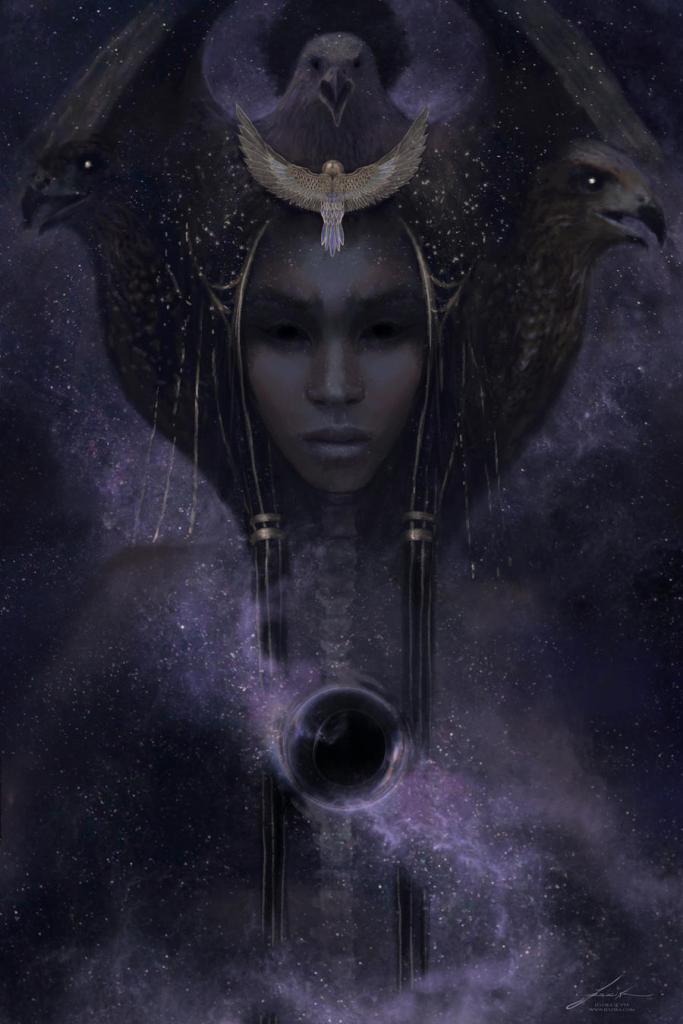
Interestingly, Her epithets in this papyrus do not parallel those of Isis, Who is In All that Comes Into Being at Her Command, Lady of What Exists, Sharp of Flame, Who Fills the Land with Her Governance, Who Pleases the Gods with What She Says, the Savior, Isis-Bast and Isis-Sakhmet, the Sister of the Great One, Who Comes at Call, and the Living North Wind.
As Twin Goddesses, Isis and Nephthys are often called “the two” this or that. You’ll find a list of those twosome names in a previous Isis and Nephthys post here. We often think of Isis as the Bright Twin and Nephthys as the Dark Twin. And it’s true. Sort of.
For instance, the Pyramid Texts instruct the deceased king to
Ascend and descend; descend with Nephthys, sink into darkness with the Night-barque. Ascend and descend; ascend with Isis, rise with the Day-barque.
Pyramid Text 222
The Two Goddesses bear light and dark children to the same God. Osiris fathered the bright God, Horus, with Isis while with Nephthys, He fathered the dark God, Anubis. The Two Goddesses also manifest their Divine power differently. While Isis guides and sheds light on the hidden paths of the Otherworld, the Coffin Texts tell us that Nephthys speaks and they are obscured: “Hidden are the ways for those who pass by; light is perished and darkness comes into being, so says Nephthys.”
While Isis summons the Barque of the Day, Nephthys is “a possessor of life in the Night-barque.” As in Pyramid Text 217, Nephthys is paired with Set, a God of dark moods and dark reputation and associated with Upper Egypt, while Isis is paired with the benevolent God Osiris and connected to Lower Egypt. In the tomb of Tuthmosis III, Nephthys is said to be the Lady of the Bed of Life, by which was meant the embalming table. She is also Queen of the Embalmer’s Shop. Plutach preserves the tradition that Nephthys was associated with the desert and the fringes of the earth, while Isis is that part of the earth made fertile by the Nile.
But wait. As with most Things Egyptian, it’s not that simple. It’s not that black-and-white nor dark and light.
Isis is not just about rebirth and sunrise. She is also the Great Mooring Post, the one Who calls each of us to our deaths. She is the Goddess “ruling in the perfect blackness” of the Otherworld and She has Her own wrathful and fiery moods. Nephthys, on the other hand, is not only about descent in the Night-barque. She is right there with Isis at the sunrise rebirth. And She is a Goddess for Whom festivals of drunkenness and joy were celebrated. She is the Lady of Beer and while Isis, too, can be so called, I know of no festivals of Divine inebriation celebrated for Her, even given Her close connection to Hathor, the original Queen of Divine Drunkenness.
The Two Sisters are not so much opposites as complements to each other. It is interesting that Isis and Nephthys seem to have become attached to different aspects of Hathor in Their association with Her. Sad at Heart Nephthys became connected with Hathor, Lady of Joy and Divine Intoxication. Lady of Governance Isis became connected with Hathor the soft-eyed Cow Mother, the Mother of the God, and the Lady of Amentet. Yet, as always, these roles are fluid and the Two Sisters flow into one another, even as They express different aspects of Their Divinity.
People sometimes wonder whether Isis and Nephthys are two different Goddesses or one Goddess? For me, the answer is, “Yes. And no.” They are One and They are Two. In my personal work with the Two Sisters, I can’t say that Nephthys feels very much different than Isis (though there are differences), but that may be because I pay a lot of attention to Isis’ own darker aspects. That admission inspires me to take some time this weekend to honor Nephthys, Excellent of Kindness, and see what more She may wish me to know.
Isis of the Winds
Today, let us take a deep, cleansing breath and honor Isis as Lady of the element of Air—of Breath, of Wind, and thus of Spirit.
Indeed, many cultures associate breath, air, and wind with Spirit. For while these things are invisible, they are invisible Powers, and we are intimately touched by their influence. We breathe the air and we live. The wind fills a sail and we move. Wind, air, and breath thus can be seen as manifestations of the invisible powers of the Deities.
Perhaps that is why my favorite title for an Egyptian book of the dead is the Book of Breathings. It is the book “which Isis made for her brother Osiris, to make his ba live, to make his body live, to make young all his members” and it especially emphasizes the importance of breath for resurrection. The Lady of the Breath of Life fans Her wings and puts “wind” into Osiris’ nose. The God lives and His Divine Spirit revives when He “smells the air of Isis.”
In Isis, breath, air, and wind are one.
In the Book of Coming Forth by Day, Isis declares that She comes “with the north wind.” The Goddess and the wind were associated because both were known to bring the cooling, life-giving waters of the Inundation. It was thought that the north wind “dammed up” the Inundation, which flowed from the south, enabling the water to flood and nourish Egyptian fields. So Isis is not only the one Who heralds the Inundation and causes it to flow (as Iset-Sopdet), but Her northerly winds also keep it in place so that it will water and fertilize the fields.
As Iset Mehit, Isis of the North, and Lady of the North Wind, the Goddess brings the sweet-smelling north wind and all good things. Temple texts at Edfu identify Her with the “good north wind.” In the Book of Hours, She is the “living north wind.” Isis is especially found whenever air is active, whether in beating wings or gusting winds. Some stories describe Her mourning cries for Osiris as the wailing and moaning of the winds.
Isis can be a controller of the winds, too, for it is She Who promises the king in the Pyramid Texts (Utterance 669), “the south wind shall be your wet nurse and the north wind shall be your dry nurse.” The wind or breath of Isis can also purify. In the Pyramid Texts (Utterance 510), the deceased is cleansed with a vessel “which possesses the breath of Isis the Great.” In a work by the Roman writer Lucian, Isis is invoked to send the winds.
In the myth of the Contendings of Horus and Set, when the Ennead finally rules in favor of Horus to succeed His father Osiris, Isis sends the north wind—which She both controls and personifies—to bring the good news to Osiris in the underworld.
Isis can also be connected to other directional winds. In the Book of Coming Forth by Day (Chapter 161), the four winds are attributed this way: Osiris is the north wind, Re is the south wind, Isis is the west wind, and Nephthys is the east wind. All of them enter the noses of the deceased and bring them life.

Isis is not the only Deity associated with the winds and air, of course. Wind is also the manifestation of Amun, the Hidden One, of Shu, the God of Air and Light, and of Atum, the Creator. In the Book of Coming Forth by Day, an otherwise unidentified “Great Goddess, Mistress of Winds” brings benefits to the deceased. In the Coffin Texts, the deceased calls himself “Mistress of the Winds in the Island of Joy.” Another tells us that the deceased receives the breath of life from four primordial Maidens associated with the four winds and Who existed “before men were born or the gods existed.” (Formula 162.)
The Book of Coming Forth by Day sometimes shows the deceased holding a sail to catch the breath of life. Since the dead are identified with Osiris, it would make sense that the sail is intended to help them magically catch the air fanned into the dead by the powerful wings of Isis.
In a later period, images of Isis Pharia show the Goddess Herself holding a sail. The billowing sail of Isis Pharia ensures smooth sailing on the seas as in life. Perhaps this later image harks back to Isis’ more ancient attribution as She Who fills the sails of the dead with breath and life.
In Graeco-Roman texts of about the same period as the Isis Pharia images, Isis “hast dominion over winds and thunders and lightnings and snows” and She declares in one of Her aretalogies, “I am the Queen of rivers and winds and sea.”
A second-century-CE papyrus found in Oxyrhynchus, Egypt calls Isis the “true jewel of the wind and diadem of life.” A hymn at the Goddess’ Faiyum temple connects Her with the winds, too: “Whether you have journeyed to Libya or to the south wind, or whether you are dwelling the outermost regions of the north wind ever sweetly blowing, or whether you dwell in the blasts of the east wind where are the risings of the sun…”
In whichever wind She dwells, Isis is always the ancient Lady of the Living Air, Queen of the Winds, Winged Goddess of the Spirit Revivified. From Her we receive our breath and our life.
Spiritual Matriarchal fiction book.
Spiritual Matriarchal fiction book.
The #1 Secret To Discovering Your Life Purpose (Through Your Soul GPS)
The #1 Secret To Discovering Your Life Purpose (Through Your Soul GPS)
She is Risen
As it often is in Portland (especially when I want to see the rising of Her star, it seems) this morning was overcast. And so I did not witness the beautiful rising of the Star of Isis.
But She is risen nonetheless.
That’s how it is sometimes. Right now for you, perhaps? I’ve seen a number of folks online saying they feel disconnected from their Deities. We are in particularly trying times, and it can feel like that. But They are there. In fact, remembering when we did feel connected can help us reconnect.
For instance, though I did not see Sirius rise this morning, I remember when I first saw Her through a telescope. If you have ever seen Her that way, you will never forget it, either. She scintillates. She glows. She shoots off rays of blue, green, pink, and white. Yes, really. Sirius is the brightest star in the night sky, second in illumination only to the sun. It is no wonder that we notice this brilliant and beautiful star.
And from at least the time of the Pyramid Texts, if not before, Sirius is connected with Isis.
In the sky, Sirius is to the lower left of the extremely easy-to-spot constellation of Orion, which has always looked to human beings like a human torso. Orion has been visualized as a Great Shepherd, Hunter, Warrior, or simply a Giant. And since every shepherd or hunter must have his hunting hound, Sirius itself, as well as the constellation in which it is the lead star, has been envisioned as a Great Dog. Interestingly, this is true in cultures throughout the world, from ancient Mesopotamia to China (where Sirius is a wolf) to Native North American tribes like the Blackfoot, who called it Dog-Face, and the Inuit, who called it the Moon Dog. (The Wikipedia article on Sirius seems to be pretty good and includes references.) Surely it was envisioning Orion as a shepherd, hunter, or warrior that led so many ancient peoples to see Sirius and its constellation as a companion dog.
Sirius cannot be seen during a period of about 70 days, from May to sometime after midsummer. At this time, Sirius and the sun are in conjunction so that the sun’s greater light blocks the visibility of Sirius. The heliacal rising of Sirius is when the star and sun are sufficiently separated so that—for the first time in 70 days—Sirius can be seen on the horizon just before dawn. In the northern hemisphere, this occurs in mid-to-late summer, the hottest part of the year. From Classical times, this period has been known as the “Dog Days” since the Dog Star of Sirius is once again visible. As those suffering through this year’s drought can attest, this hottest time of the year can be miserable. Homer knew it as a time of fevers and suffering. The Romans thought it made dogs act crazy. We think of it as a time when we’re panting like a dog because of the heat.

In contrast, ancient Egypt didn’t originally connect Sirius with dogs or wolves. It did, however, connect the star with something vitally important—the Inundation, the annual flooding that enabled farmers to grow the crops required for Egypt to feed itself. The heliacal rising of Sirius was the herald of the Nile flood and its rise marked the beginning of the New Year; thus Sirius (Sopdet in Egyptian) was called the Fair Star of the Waters and the Opener of the Year. In Egypt’s earliest written records, the Pyramid Texts, Sopdet is Isis: “Your sister Isis comes to you [Osiris] rejoicing for love of you. You have placed her on your phallus and your seed issues into her, she being ready as Sopdet, and Hor Sopd has come forth from you as Horus who is in Sothis [the Hellenized version of the Egyptian Sopdet].”
To acknowledge the Goddess’ ancient connection with Her star, some shrines and temples of Isis, including the small Isis temple at Ptolemaic-era Denderah, were oriented towards Sopdet. When Egypt came under Greek and then Roman rule, Isis got Her canine connection. In a later-period aretalogy (self-statement) from Kyme in modern Turkey, Isis says of Herself, “I am She that riseth in the Dog Star.”
Just as Orion the hunter is inseparable from his hound, so the Egyptians saw a connection between the constellation they called Sah (Orion) and the most brilliant star in the heavens, Sopdet. Sah could be identified with Osiris Himself or considered to be His ba or soul. Sopdet was identifed as Isis or as Her ba. As Orion rises before Sirius, you can see the ancient myth of Isis searching for Her lost husband played out before you as the constellation Orion appears to move through the sky ahead of the Beautiful Star.

Yet there is another interpretation of the movement of the stars through the sky that takes us to an even more important point in the Isis-Osiris myth. You see, when the Orion constellation first appears on the horizon, Osiris seems to be on his back, with Isis-Sopdet rising beneath Him. As the night passes and the constellation rises higher into the sky, He “stands up,” with Isis at His back all the while, pushing upward until the God is raised. Even more so than the myth of Isis following Osiris to pick up the pieces, we can see the rising of Orion and Sirius as Isis raising Osiris from the dead, the stellar model of the ritual of Raising the Djed Column, which the pharaoh, with the help of Isis, performed on earth.
Sirius Rising Calculator
Depending on your area’s latitude, Sirius could be rising anytime from July to August in the northern hemisphere.
Here’s link to a calculator you can use to find out when She rises in your area. You’ll need to know your latitude and elevation above sea level.
Go to http://www.culturediff.org/english/clientareatest1.php Enter your email and the password softtests.
Discover Your Life Mission (Free Workshop)
Discover Your Life Mission (Free Workshop)
Serving Isis: Spiritual Growth
Finally, we come to the heart of the personal work of the ministrant of Isis. It is the last of the keys to serving Isis we’ll talk about: the work of spiritual development.
Spiritual growth or development is a process, not an end result. It is the ongoing search for and discovery of the truth of our hearts and souls, our Selves, and our relationship with the Divine.
It is not a single truth nor is it an unchanging truth. The process of growth is, after all, a process of change. It is not a truth contained in the pages of just one book—though Paths to it may be found in many books, written in many different languages. It is a truth most convincingly found in our own experience of the Divine by whatever Name we call It and in whatever form we imagine It. This truth calls us from the core of our Being. It is the truth against which our hearts will be weighed on the Scales of Truth when we pass from this world into the next.
Spiritual growth is the process of discovering our personal truth and learning how that truth is in (or can be brought into) harmony with the Divine truth. Once discovered, this gnosis—this deep, sacred knowing—can serve us as a guide for creating ways to live life more authentically and with more wisdom and compassion.
Our entire relationship with Isis is part of this process. Anything and everything we do in relation to Her, from making offering to deep communion, helps this process. Each and every time we make contact with our Goddess, we can increase our harmony with Her. We are like the strings of a musical instrument that begin to vibrate when the bow is drawn across any one of them. The ancient theurgists would have considered such Divine contact to help “purify” us, that is, to help us connect more clearly with our pure or essential natures.
All of the exercises, rituals, and meditations that make up the stages of relationship with Isis in Isis Magic are designed to help us do this. One of the key tools for growth, the “Invocation of the Shining One,” first makes its appearance at the stage of relationship called the Magician of Isis.
Like Isis Herself, the Shining One has been called by many names. In ancient Egypt, it would have been the Akh, meaning both “shining” and “effective” one. It has also been called the Higher Self, the Deep Self, the True Self, the God/dess Self, the Genius, the Atman, the Augoeides, the Holy Guardian Angel, and the Isis Within. It is that greater part of each one of us which is essentially Divine. Contact with this Divine Self is critical to our spiritual development.
Many people find they have difficulty with this aspect of the spiritual journey. I know I did. And do. It is genuinely difficult work, yet it is vital. Only patience and persistence will see us through. Simply return again and again to the work of making contact with and experiencing the Shining One, the Isis Within.
This work is hard to talk or write about because it becomes very personal and individual. For insight, there are numerous books you can explore. Look for works on enlightenment; Hindu, Buddhist, Christian, Pagan.
The work of spiritual growth will make us weep. Many times. It will also make us laugh with unexpected joy. We will catch a glimpse of the Isis Within. And then we will go on with our lives.
For spiritual growth does not mean there will be no more trouble in our lives. It does not insulate us from trouble or pain. No matter how spiritually developed we may be, we and the people in our lives are still human, capable of all the beauty and ugliness of humanity.
What spiritual development does mean is that we will be able to cope with our day-to-day duties and the trials we encounter in our lives in a much wiser and more compassionate manner. We will be better able to understand—and thus shape—our thoughts and actions so that they are better aligned with our growing gnosis. We will find ourselves less tossed about by our emotions, more able to see the beauty in life. We will become more open, less defensive.
In our relationship with Isis, we experience the sacred. We grow. We discover who we really are. We become wiser and more compassionate. We learn how to live more authentically, in greater harmony with our true selves and the Divine reality of the Goddess. It is, perhaps, the most vital aspect of serving the Goddess as Her devoted ministrant. If we have done it well, we will become better people.
Like many of us (I suspect), I have been living with a very heavy heart lately. Yet I cannot let fear or despair take me. They are not only the mind killers, they are the heart killers. All of us will need both our minds and our hearts to get through this, whether our “this” is internal or external or both. Note to self—and you, if you need it—just keep connecting with Her; keep growing toward Her.
Serving Isis: Worshiping the Goddess

Some time ago, I was corresponding with a man in England on Dionysian subjects. (You may recall that, in addition to my devotion to Isis, I also have a passion for Lord D.) During the course of our conversation, I said something about worshipping Dionysos. He wrote me back to the effect of “you wouldn’t catch me worshipping anybody or anything!”
I suspected we had a definition problem—and that turned out to be so, because when I explained that what I meant by worship was an expression of love, appreciation, and honor toward the Divine, my Dionysian pal wrote back saying he’d decided that, in that case, he guessed worship was okay with him.
I think a lot of people share my friend’s ideas about worship. The word is too…um… “churchy.” For many, it has come to have a hollow sound and worse yet, a hollow feeling. Some associate it with merely going through the motions—attending church, sitting in rows, singing ill-harmonized hymns, and eventually passing the collection plate. Others may associate worship with bowing before some cold and distant deity. (I am inevitably reminded, and perhaps you are, too, of Monty Python’s toadying minister: “Oh God, You are so gosh-darned BIG…”) Such prostration appears to them to have no respect for the sacred possibilities of either humankind or Nature and leaves an unpleasant taste in their mouths.
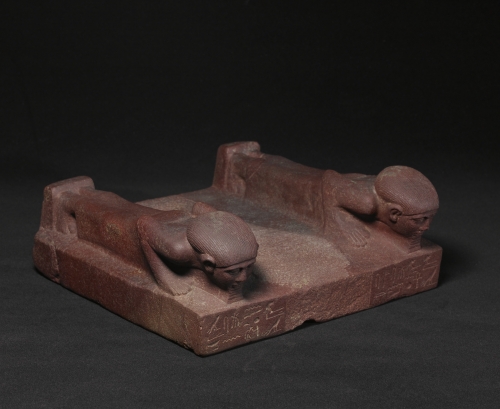
Yet worship is one of the most significant ways we can relate to the Goddess. It is certainly an appropriate way for a ministrant of Isis to relate to Her.
True worship has to do with reverence and appreciation for the Divine, as well as for that which is sacred in others, in ourselves, and in the manifested world. Worship is a meaningful way of expressing our feelings and inner selves to the Divine. It is a way of speaking about and participating in that which we find sacred. Worship requires participation not by the mere rote actions of our bodies, but by the focus of our minds, the openness of our hearts, and the willingness of our souls and spirits.
When we sense Isis’ heartbeat and understand that She senses ours, we are participating in worship. When we finally, actually know, in our bones, in our guts, in our hearts that She really is there, the door to worship is flung wide. The temple of our soul is opened, and She indwells. When we taste Her truth upon our tongues, and are grateful, grateful, grateful for that taste, then we worship. When Her Mystery allures and deepens us rather than merely baffling, that is worship. When we know Her in the light in our lover’s eyes, a blade of grass, a spider’s dance, we are worshiping.
We may do this intuitively or, using the Art of Ritual, we may speak to Isis, sing to Her, listen to Her, make offerings to Her, express our gratitude to Her, commune with Her in a ritual context. When we do this consciously and with full intent to expand our souls and spirits, it is then that we truly worship. As we come to know Isis through our acts of devotion, we come to love Her and to understand that She has always loved us.

And love…love is the true essence of the worship that a ministrant of Isis gives to their Goddess.
Opening of the Ways to the Goddess Isis
There will be another post in the current series tomorrow…I’m publishing this ritual from Isis Magic so it’s easy to access for some of us who will be Offering to Isis for the local Fall EQ Festival.

About the Rite: This is the all-purpose opening ritual of the House of Isis. It can serve as a beginning of almost any other rite or it can be an entire working by itself. It is an excellent opening for personal work or communion with Isis.
Temple Arrangement & Ritual Tools: Nothing special needed.
ENTERING
Enter the temple, face East, and give the Sign of the Wings Of Isis.
Ritualist: I am a Beloved of Isis. I am a Child of the Goddess. (Repeating until you feel it to be true.)
PURIFICATION & CONSECRATION
Perform any type of purification and consecration that works for you. When this is complete, return to center of temple, facing East, and makes the Sign of the Wings of Isis.
Ritualist: Isis is all things and all things are Isis.
OPENING
Stand in the West, facing East. Again raise your arms in the Sign of the Wings Of Isis.
Ritualist: Open, O Heaven! Open, O Earth! Open, O East! Open, O West! Open, O South! Open, O North! The gates of Your temple shall be flung wide for You, Goddess Isis!
Move to the center of the temple; visualize your aura as a glowing egg completely surrounding your body. Give the Sign of Opening the Shrine.
Ritualist: Let the shrine of the East be opened unto Isis, only Isis. (Vibrating) ISET NEF.
Visualize the Eastern part of your aura becoming like a glowing net—complete, yet open to the Goddess. Next turn to the South and repeat the entire procedure.
Ritualist: (Facing South) Let the shrine of the South be opened unto Isis, only Isis. (Vibrating) ISET ASH.
(Facing West) Let the shrine of the West be opened unto Isis, only Isis. (Vibrating) ISET MU.
(Facing North) Let the shrine of the North be opened unto Isis, only Isis. (Vibrating) ISET TA.
Facing East once more, extend your arms above your head and give the Sign of the Opening of the Shrine.
Ritualist: Let the shrine of Heaven be opened unto Isis, only Isis. (Vibrating) ISET BA.
Repeat the Sign below you.
Ritualist: Let the shrine of the Earth be opened unto Isis, only Isis. (Vibrating) ISET KA.
Repeat the opening motion, starting from the heart and moving outward.
Ritualist: Let the shrine of my Heart be opened unto Isis, only Isis. (Vibrating) ISET IB.
Visualize doors opening in your heart—chains falling away, shells breaking open.
INVOCATION
Continue facing East and make the Sign of the Wings of Isis.
Ritualist: I have opened the ways for You, Goddess Isis.
Turn your arms inward to the cup posture and invoke:
Ritualist: Come, therefore, Winged One and fill this vessel. Grace me, Isis, with Your presence. Enter into Your House and be with me. O come Beloved One, Great of Magic, Beautiful of Wings, Bright of Face.
Open my eyes to Your everywhere-presence. Awaken my heart to the voice of Your beating wings. Make bare my soul to the beauty of Your Words of Power.
I arise on wings of aspiration unto You, Goddess Isis. Come, descend from above, arise from below, expand from within—and fill me. From the rising bud of the lotus, to the mighty branch of the sycamore, to the Moon and Sun which are Your eyes, to the Stars which entwine Your hair, all the Universe is Yours, Isis—as am I. O Isis, Goddess, Mother, Sister, Queen—the Ways are open unto You—I am open unto You.
I invite You—enter in now! (Vibrating) ISIS. ISIS. ISIS.
Visualize the Light of Isis filling the cup you are making with your arms. When you feel it is full enough, slowly lower your arms, letting the Light pour into your aura. Now is the time to commune with the Goddess or perform other work.
CLOSING
Face East. Begin at the heart and make the Sign of the Closing of the Shrine. Then move in reverse order as you close below, above, then in each direction.
Ritualist: Let the shrine of my Heart be closed. Let the shrine of Earth be closed. Let the shrine of Heaven be closed. Let the shrine of the North be closed. Let the shrine of the West be closed. Let the shrine of the South be closed. Let the shrine of the East be closed.
Visualize your aura as solid once more. Thank the Goddess, make the Sign of the Wings of Isis, then quit the temple.
Notes:
For the Sign of the Wings of Isis, raise your arms like wings.
For the Sign of the Opening of the Shrine, put your hands in front of you, arms straight and palms together. Slowing move them apart as if opening heavy curtains. The Sign of the Closing of the Shrine is this in reverse.
Earth-Friendly Tips for Keeping Cool
Earth-Friendly Tips for Keeping Cool
Serving Isis: the art of ritual
I believe that the ministrant of Isis should develop some facility with ritual. Of course, this is more important for those of us who are involved in ceremony with other people, less important if we work solitary. But even for solitaries, having some ritual skill benefits our spiritual work by making it more graceful. This, in turn, enables us to be less self-conscious and better able to focus on developing our relationship with Isis.
Ritual is how we human beings do religion. Throughout the world—almost without exception—the practice of religion involves the practice of ritual. Even quiet, private prayer or meditation is normally ritualized in some way. Whether by folding our hands, sitting in a yoga asana, counting a rosary, or simply lighting a candle, some sort of ritual pattern is usually incorporated in spiritual activity.
Ritual is a communicative art that goes beyond what we are able to express by speech alone, dance alone, music alone, or intellectual effort alone. Because ritual can combine all these things—and energize them with the power of symbolism—ritual enables us to communicate with the other people in the ritual and with the Divine in ways beyond our normal capacity. Some things, particularly the ineffable, sacred things we are trying to express in a relationship with Isis, can only be expressed through ritual.
Ritual takes us beyond the body-mind/soul-spirit split. It gives us a holistic way to communicate with and relate to Isis. It is a primary tool of the ministrant of Isis for worship and spiritual growth. Working to gain ritual proficiency is particularly appropriate for someone in an intense relationship with Isis because of the strength of the ritual tradition in Egypt and because Isis is a Goddess of Sacred Magic, an art that is almost always practiced through ritual. What’s more, I can tell you from my experience with other ministrants of Isis, it seems that the Goddess often gifts us with rituals that they are then asked to share.
What ritual does
Ritual is completely natural to human beings. It is an essential, even primal, human activity. Indeed, some of the earliest evidence from our cave-dwelling ancestors is evidence of ritual.
There are biologically based rituals in which we engage—for example, sexual behaviors. We also take part in social ritual. We may shake hands when we meet each other; we mark life passages such as marriage or death with ceremony. These types of rituals give us ways to interact with each other and to understand each other, especially at times when words fail, such as funerals.
And then there is sacred ritual. Sacred ritual not only helps us recognize changes in our lives, it also helps us create changes and—this is important for devotees of Isis—provides us with a means of worship.
Ritual is not just a set of actions we move through by rote. Ritual is powerful because it deeply affects us. It affects us psychologically and it affects us physiologically, both of which, in turn, feed back into our spiritual selves.
You may be familiar with the work human potential researcher Jean Houston. She has done extensive work on what she calls “psychophysical” exercises. They include such things as visualization, working with the kinesthetic body (some ritualists might call this the astral body), learning through conversation with a personified aspect of the self, and personification of an object to discover its “essence.”
Many of us would recognize these things as elements of at least some types of ritual. From her studies, Houston concludes that these exercises give people the ability to learn more quickly, to think on multiple tracks at once, and to tune into the symbolic and mythic parts of themselves at will. This alone would make ritual worthwhile, but there’s more.
In therapy, Houston says these ritual-type exercises work much better for patients than talking therapies alone because talking therapies involve only one part of the person’s being while these exercises, (rituals), involves the whole person.
I strongly agree that the holistic nature of ritual is deeply valuable for human beings. By addressing the whole person, physical and spiritual, ritual can move us toward greater wholeness. Wholeness is one of the keys to spiritual growth and spiritual growth is one of the key responsibilities of ministerial work with and for Isis.
Invocation and offering
Some of the basic components of ritual include chanting, singing, drumming, spoken invocation, moving in circles, dancing, meditation, and repeated patterns. Researchers have studied the effect of these things on the brain and the human nervous system and there seem to be two main things that these ritual components do in the human system: they trigger our emotions and they decrease the distance between us and others—including the Divine. These repeated patterns affect the brain’s neurological ability to define the limits of the self. They break down the walls we put up between ourselves and others—including those we erect between ourselves and the Goddess. Thus ritual helps us find self transcendence. By becoming less focused on ourselves, we can better open ourselves to the experience of Isis.
On the emotional side, strong rhythm or repetition (of a mantra, for example) has been shown to produce positive limbic discharge in the brain (the limbic system is part of the brain that deals with emotion among other things), which results in pleasurable feelings. If these feelings are prolonged, a part of the brain called the amygdala gets involved; the amygdala is connected with the fear-arousal system. Some researchers think that the combination of pleasure and a slight elevation in the fear-arousal system could produce the feeling of religious awe that many of us experience.
Ritual has also been proven to lower blood pressure, decrease heart rate, lower rates of respiration, reduce levels of the hormone cortisol (the “stress hormone”), and and create positive changes in immune system function. It seems that ritual is even good for our health.
Built for spiritual experience
None of this means that there is no magic in ritual. Far from it. What it means is that our physical bodies were built for and/or evolved this way so that we are able to participate in the magic of ritual and to better communicate with the Divine; in our case, with Isis.
Our bodies are not the mere cause of the effect; they are its result. As the ancient Hermeticists would say: As Above, So Below. We are a microcosm reflecting the way the macrocosm works. Our bodies do not make us experience the spiritual. They enable us to experience the spiritual. We have evolved this way because the spiritual is real, because it is valuable, and because we human beings need to be able to experience it.
The magic of ritual profoundly affects us. Whether it’s a scripted group rite, a drumming circle, or an unscripted intuitive rite, ritual is one of our most powerful tools for human growth, spiritual expression, and Divine communion. The ministrant of Isis should have at least some facility with this important tool.
The Mysteries of Life
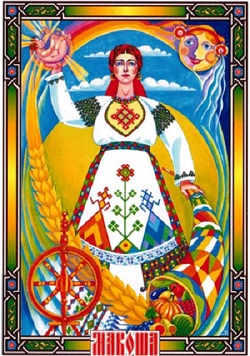 The Mysteries of Life season opens with Chelanya, often called the Golden Festival, which celebrates regeneration. The principal symbol of the festival is grain of all kinds, cut down to rise again in the cycle of time.
The image shows the Slavic Great Mother Makosha or Mokosh who is strongly associated with the Mysteries of Life.
Read more about Chelanya, the Golden Festival
The Mysteries of Life season opens with Chelanya, often called the Golden Festival, which celebrates regeneration. The principal symbol of the festival is grain of all kinds, cut down to rise again in the cycle of time.
The image shows the Slavic Great Mother Makosha or Mokosh who is strongly associated with the Mysteries of Life.
Read more about Chelanya, the Golden Festival The Mysteries of Life
 The Mysteries of Life season opens with Chelanya, often called the Golden Festival, which celebrates regeneration. The principal symbol of the festival is grain of all kinds, cut down to rise again in the cycle of time.
The image shows the Slavic Great Mother Makosha or Mokosh who is strongly associated with the Mysteries of Life.
Read more about Chelanya, the Golden Festival
The Mysteries of Life season opens with Chelanya, often called the Golden Festival, which celebrates regeneration. The principal symbol of the festival is grain of all kinds, cut down to rise again in the cycle of time.
The image shows the Slavic Great Mother Makosha or Mokosh who is strongly associated with the Mysteries of Life.
Read more about Chelanya, the Golden Festival Serving Isis: a responsibility to know and to experience
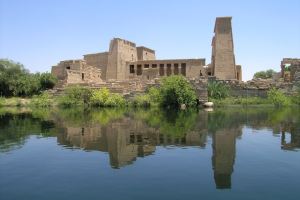
There is a saying in the western esoteric initiatory tradition that seems particularly apt for the ministrant of Isis: “I desire to know in order that I may serve.” In means that we are not entering into our service simply because we’re greedy for secrets or status. It means that we seek knowledge so that we can better serve the Goddess, our communities, and our world.
Since ministerial service is essentially about giving, improving our own knowledge base and experience also means we will have something valuable to give.
Knowledge
Of course, those who serve the Goddess have always been expected to have some special knowledge, for example, knowing how to properly conduct the rites required to create and maintain a relationship with Isis. But this devotion to learning goes beyond that, too. The Greek philosopher, Porphyry, in his work On Abstinence, paraphrases the Stoic philosopher Chaeremon’s observations on the Egyptian priesthood:
“But they divided the night into the observation of the celestial bodies, and sometimes devoted a part of it to offices of purification; and they distributed the day into the worship of the Gods, according to which they celebrated them with hymns thrice or four times, viz. in the morning and evening, when the sun is at his meridian altitude, and when he is declining to the west. The rest of their time they devoted to arithmetical and geometrical speculations, always laboring to effect something, and to make some new discovery, and, in short, continually exercising their skill. In winter nights also they were occupied in the same employments, being vigilantly engaged in literary pursuits…”
Porphyry, On Abstinence, book 4, section 8
Thus, being a ministrant means not only knowing the proper rites, but also pursuing knowledge of all kinds, striving always to “make some new discovery.” There can be no doubt that teaching went on in the Egyptian temples. Of course, this was knowledge only for a very select group of people. Yet it informed the work of the priesthood so that they could be more effective in their service on behalf of Egypt and the people as a whole.
The Mysteries, such as the Mysteries of Isis or the Mysteries of Eleusis, were open to a wider group of people—as long as you could afford the travel and other expenses. Here, too, the officiants were expected to have special knowledge and understanding. Furthermore, they were expected to share that information with the initiates.
It was, in part, for this special knowledge that one undertook the Mystery rites. Initiates might expect the revelation of certain secrets regarding the Deities of the Mysteries. They might learn about new aspects of the Deities or be taught secrets of myth or ritual. Many would have been given important information about how to ensure a happy afterlife, as were Orphic initiates who were instructed on the proper spring from which to drink on their journey toward rebirth. In fact, it was quite commonly expected that the ritual guides of the Mysteries guided their clients to knowledge.
You may recall that in Apuleius’ tale of initiation into the Mysteries of Isis, he was shown certain books (seemingly in hieroglyphs) that contained the instructions for his preparations for initiation. In fact, one of Isis’ late epithets is Lady of the Book. The aretalogy from Oxyrhynchus says that She was called Understanding at the town of Apis; and Isis has always been a Lady of Wisdom. Isis is a Goddess Who encourages learning and wisdom in Her devotees, and especially in Her ministrants.
Alas, modern Isiacs have no great temples in which to study or established Mysteries of our Goddess in which to serve.
As is our path in general, our course of study in Her honor must be more individualized. As one who serves Isis in this deeper capacity, there are things we should know. As far as it is possible, we should know the history of Her worship, how people honored Her in the past, what they thought and said about Her. That is one of the reasons I wrote Isis Magic. To be Her ministrant, I needed to know these things; and then, I needed to pass them on. That was one of Her tasks for me. Acquiring that knowledge formed a large part of my personal training. Even so, there is much Isis-related scholarship out there in the world and I still find out new things about Her and how people have related to Her throughout history. I try to share those new discoveries here on Isiopolis.
As a ministrant of Isis, you will likely be in a position to influence others. If you are teaching, you will need to know something in order to be able to teach it. As your students learn, you will have to continue learning so that you may always have something new to teach them. If we don’t keep on learning, we become dry vessels—not only for any thirsty students we may have the privilege to teach, but for ourselves as well. To keep our intellectual and spiritual juices flowing, we must keep learning.
And Experience
But “book learnin” is just one of the ways of knowing. The other is experience. This means we must develop our personal relationship with Isis; we must experience Her. This is a subtle kind of learning. It is different for each individual. And yet, there are commonalities. It is these subtle commonalities that let us know we’re connecting with Isis specifically.
This is even trickier when it comes to Isis because She is a Great Goddess. She has many, many aspects and different people may connect with different aspects. Still, there is a feeling commonality. I’m pretty sure that if you connected with Isis as Great Mother and I connected with Her as Great of Magic—and we could share each other’s feelings—as Her experienced ministrants, we would know that we were both experiencing Isis.
In the grand scheme of explaining things, that doesn’t help much, does it? Yet that’s what experience does. As a ministrant of Isis, you should be able to tell. On the other hand, we can’t let our experiential knowledge be used to deny someone else’s experience, even if we don’t agree with it, or to boost our own egos because we have the “right” answer. Our experience should be used to guide, and only with the permission of the guided (as in a teaching relationship).
The Pagan internet has been lit up in the last few years with a good deal of theological soul-searching about the nature of the Divine and our relationship to the Divine. It is very exciting that we have grown to the extent that it is time to have these discussions; I just wish we could have them without so many arguments.
Our experiences as devotees and as ministrant of Isis will lead us to find our own answers to these important questions. Our experiences can add value to the ongoing discussion about the nature of the Divine and our relationship with It. Our experiences may be used to guide others as they begin their own paths and until they find their own answers. But we must use our experiences wisely. Developing that wisdom is part of our Work as people who serve Isis.












